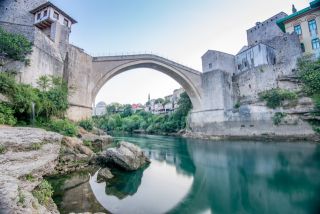Education
High School Student Researches Fascism and Emerging Themes
Authentic Exploratory Research gets students to dig deep.
Posted June 1, 2024 Reviewed by Kaja Perina

This is the third in a series.
There was a time when some teachers mistook retaining information, such as memorizing facts, as learning. Fortunately, these days teachers know the value of making lessons engaging and rigorous through modern pedagogy that engages critical thinking skills, such as those high on Bloom’s Taxonomy and Depth of Knowledge scales. When conducting research, however, students awash in facts can easily slip into regurgitation mode, where they merely assemble a collection of facts in a sensible format. Even experienced adult researchers can fall into that trap. It thus takes very careful instruction to hone student researchers’ ability to analyze, synthesize, and evaluate findings. Only then can students produce high-quality research with their own spin on a subject. Students at Laguna Beach High School (LBHS) are exemplifying the kind of research that stems from such instruction.
In Part I of this series I interviewed Jun Shen, the passionate teacher and edtech coordinator who runs LBHS’s Authentic Exploratory Research (AER) Program. AER is an independent research course inspired by Palo Alto Unified School District’s Advanced Authentic Research program. The program pairs students with adult mentors (such as LBUSD staff, industry experts, and academics) who assist the teens in researching their own big questions in fields of their choice. Shen’s explanation of how the AER program works, combined with students’ input through the rest of this interview series (such as Aryana Mohajerian’s in Part II), lets us glimpse some of the different ways students can use the program to pursue their own passions, as well as how other educators can implement such a program.
LBHS student Carter McKinzie was the second youth to give us an account of his experience in AER and the findings that his AER research produced. I was particularly struck by McKinzie’s understanding of the nuances of the human psyche, as well as the psychology that enables fascism. McKinzie’s answers follow each question below.
Jenny Grant Rankin: In short, what was your research study about?
Carter McKinzie: This research aims to provide an understanding of the reasoning and the transformation between a far-right military organization, ORJUNA, and its fascist core to the Yugoslav People's Moment (Југословенски народни покрет), which took its silhouette under the fascist dictatorship. While these moments existed at two distinct periods, the underlying motivations of ORJUNA seem to metamorphose within the latter movement; it seems that in a broader scope many similar movements (nationalism) that organizations maintain the same purpose of periods (five to twenty-five years); however, it does appear that engaged population and devices do vary, meaning in essence that understanding these organization and movements require looking at the original, which in this study is ORJUNA. While the research aims to look at the Balkans, the themes that emerge in this region can be applied to various organizations in different regions and provide an understanding of how fascism and nationalism permutate within far-right organizations.
JGR: What were your most important findings?
CM: The disposition of good people to fall victim to the fascist myth. While there were important structural findings between the various paramilitary organizations, at the core of all of these organizations, is the ability of ideologies to manipulate human nature and make individuals engage in actions they never would have imagined.
JGR: What was the biggest thing you learned about conducting research?
CM: Turbulence—I set out at the beginning of this research with an overly broad question that would be nearly impossible to answer completely. Shortly after, I changed my focus to one country, but it was over the course of a century, and I began reading and researching my question; however, I promptly learned that I would be making sweeping generalizations if I continued on that path. Again, I was at the drawing board; however, I realized that I was really interested in the underpinnings of fascism in Yugoslavia, which is the route I chose.
JGR: What was the biggest thing you learned about communicating research?
CM: It would be accessibility and context. During my research, one of the things I grappled with constantly was how others would find this valuable and engaging. I think that the answers lie in multiple parts: the first being that the research is communicated in a medium that is accessible and while the bulk of my research is composed in a journal article, that does not mean that is the only medium of communication. I am working on a video medium, where it would provide a five-minute overview of the research, which can seem much more accessible to a wider audience than a long paper.
JGR: What was your favorite part about AER?
CM: Agency —I think that the class’s structure, which allows students to pursue what they find meaningful is a model for what education should look like globally. The ability for students to elect what they want to research, and then receive support from an industry professional, in my case a university professor, is extraordinary, as it allows students to understand not only the hard set of skills they need to be successful in the industry, but, especially for me, the soft skills that come along with entering different industries.
*****
McKinzie’s move to narrow his topic paid off, as it allowed for insights like the power of ideologies and the application of regional themes to other areas. Higher-order thinking skills are crucial to educational programs that nurture students’ research skills.


